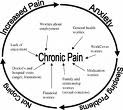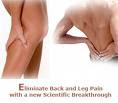
A new research study by Dr.Timothy Carey, a Professor of Medicine at the
University of North Carolina reveals that
chronic lower back pain may be increasing. This statistic was found in North Carolina and is being extrapolated for the entire USA.
Dr. Carey’s team discovered that the cost of treating chronic low back pain has not only increased, but that patients are simply seeking more services and treatment. Also they found that the number of people who suffer from long term lower back pain is increasing.
According to the study, 3.9 percent of North Carolina residents surveyed in 1992 said that they had debilitating, chronic back pain. That number rose to 10.2 percent by 2006, the researchers said.
Among people reporting ongoing, serious low back pain in 1992, about 73 percent said they had seen a physician, physical therapist or chiropractor at least once during the past year. In 2006, 84 percent said they had done so. However, the average number of health care visits remained the same, at just 19 a year.
The fraction of people with back pain who had ever had back surgery increased only slightly, from 22.3 percent in 1992 to 24.8 percent in 2006. Although the study’s aim was not to determine the cause of lower back pain, they ascertained that obesity and depression do play a role as well.
They point out that the cost of chronic lower back pain is a loss in productivity among workers, to the tune of $100 billion dollars a year. Dr. Carey states that “In one sense, we're all paying for back pain. It ends up being reflected in our health insurance premiums and our Social Security disability costs”
Also,
lower back pain causes impairment. The National Health Interview Survey showed that neck and lower back pain increased from
3.2% in 1997 to
8.8% in 2006.
The findings also raise questions as to the effectiveness of current back pain treatments, Carey said. For example, another recent study he participated in showed that
exercise remains underutilized as a means of treating chronic back and neck pain, though numerous studies show it can be effective.
A
University of Washington health services researcher, Brook Martin, who specializes in studying spinal services, agrees that a
doubling of chronic back pain over 14 years raises serious issues about current treatment approaches. "It makes us have to think about how to approach back pain," Martin said. "Chronic care models and clinical protocols and guidelines are not really the standard in treating back pain. This kind of highlights that this might be a real need."
In the February 2009 Issue of
Connecticut Magazine, Margaret Farley Steele discusses the latest treatments for chronic lower back pain.
According the
National Institutes of Health, lower back pain is the #1 reason why Americans seek medical attention, followed by headaches as the #2 reason.
In her article Steele talks with many medical professionals about the different treatments available for chronic lower back pain, including:
- Having a neurostimulator implanted in the abdomen that provides a low wattage electrical stimulation through leads to the lower back area (lumbar spine). Dr.Loyd Saberski, of the Pain Treatment Centers of New Haven explains that the “burden is on the patient” when it comes to finding relief. Dr.Saberski also notes that anemia and depression also need to be treated. He also treats with physical therapy, and nutrition among more common treatments such as pain injections.
- At the Orthopaedic and Sports Medicene Center in Trumbull CT, Dr. Gerald Girasole offers Physical Therapy and non steroidal anti-inflammatory medication. He states that if patients don’t find relief, they are referred out for a lumbar MRI and surgery is considered
- Dr. Edward Hargus, a pain management specialist in Norwich states that most patients that experience Low Back Pain will get better in 6-8 weeks. He states that “ I see bigger and bigger back operations and poorer results all the time” He further states that stress can aggravate a chronic pain problem.
- Dr. Matthew Bellinger, a chiropractor in Glastonbury uses non surgical spinal decompression at the CT Spine and Disc Center. These treatments take 4-6 weeks and help to rehydrate the discs in the lumbar spine.

Steele goes on to reveal that with all these different treatment approaches the state of Connecticut received a “B” grade in regards to pain policies set by the University of Wisconsin’s Pain and Policy Studies Group. “The researchers examined how well a state restricted unlawful use of medications while making them available for patients needing them, and they looked for pain-management training guidelines.
With the advent of technology new treatments for lower back pain are coming out everyday. Yes, chronic lower back pain is a real problem, one that we must continue to research everyday.
Sources:
Additional Reading Resources:





